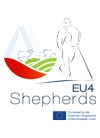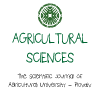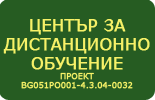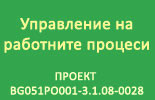Genetics of quantitative characteristics
|
Course title: |
Genetics of quantitative characteristics |
|
|
Course code: |
AFGQC |
|
|
ECTS: |
3 |
|
|
In-class hours |
Lectures: |
15 |
|
Laboratory work/Tutorials: |
15 |
|
|
Self-preparation hours |
Practical training: |
|
|
Other: |
45 |
|
|
Total hours: |
75 |
|
|
Language: |
English |
|
|
Study cycle: |
Master |
|
|
Semester: |
Summer |
|
|
Faculty: |
Faculty of Agronomy |
|
|
Name of the lecturer(s): |
Assos. Prof. Bojin Bojinov, PhD |
|
|
Mode of delivery: |
Face-to-face |
|
|
Prerequisites: |
Basic knowledge on plant breeding and statistics |
|
|
Learning outcomes of the course unit: |
The module will examine study the essential elements of biometric genetics, which are necessary in clarifying the genetic are of the source material. Their insight is a key element in defining the objectives and programs of the selection methods user for quantitative manipulation of signs in lines and varieties of pollinating crops and populations are crop-pollinated plants. Particular attention will be given to the mapping of genes and genomes using modern molecular genetic methods and techniques and more specifically – the theoretical basis and practical use of the tad-attribute association. |
|
|
Course contents: |
1. Indicators with complex inheritance. Quantitative and qualitative indicators. 2. Analysis of quantitative indicators characteristics. Reasons for variation. Genotypic and phenotypic effects. 3. Determine the number of genes controlling quantitative signs. Link-gene locus. Mapping of genes and genomes. 4. determine the number of genes controlling quantitative signs. Linc-gene locus. Mapping of genes and genomes. 5. Components of average generations – aditivnost, dominance, and over dominance. Variation curves of generations. 6. Kovarians and closely correlated in populations. Graphic analysis. 7. Components of phenotypic varians. 8. Analysis of quantitative characteristics determination of the main statistical indimakers characterizing the biological population. 9. Estimation of the significant difference between the signs of small and large samples. 10. Calculation of the average components – aditivnost, dominance and over dominance. 11. Calculation of inheritability in the broad and narrow sense of the word using components of phenotypic varians. 12. Annex of Single variance analysis (ANOVA) to determine the coefficient of inheritability. 13. Use of two factors ANOVA to determines the coefficient of inheritability. 14. Genotypic and phenotypic correlations |
|
|
Recommended or required reading: |
1.Fowler, J., Lou Cohen. Practical statistics for Field Biology, New York, 1992. 2. Sokal, R.. Biometry, Second Edition, 1981. 3. Hartl and Jones. Genetics. Jones and Bartlett Publishers 2000. |
|
|
Planned learning activities and teaching methods: |
Standard training includes lectures, laboratory, seminars and training and other commitments izvanauditorni student (development of presentations and self-training). The course includes the following mandatory components: lectures, laboratory work, seminars, as well as student self-preparation. The lectures and laboratory practical works are supported by extensive literature and material basis. The lectures are delivered by means of PowerPoint presentations. The seminars take the form of a discussion between the students and the lecturer, with reference to pre-selected topics |
|
|
Assessment methods and criteria: |
The course ends with a written examination. The latter includes a pre-defined set of questions, which is drawn from the course material. The grading will conform to the 6-grade system. The results will be published no later than 2 weeks after the exam |
|
 - Events on the occasion of the 80th anniversary of AU
- Events on the occasion of the 80th anniversary of AU











